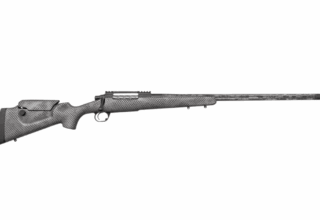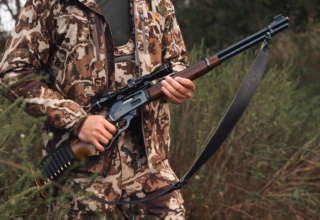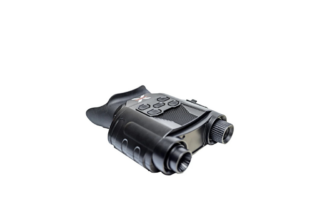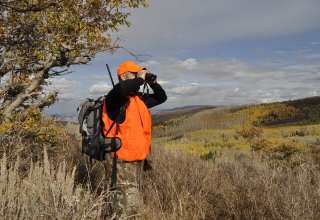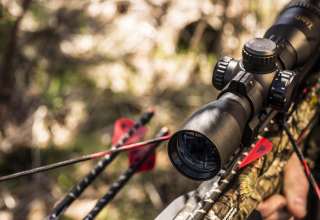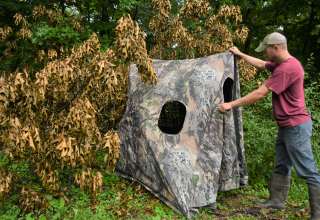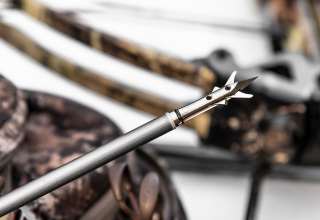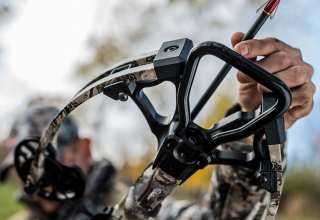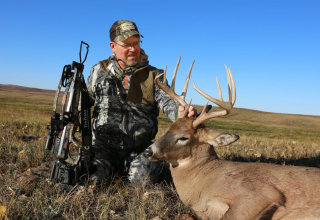The major benefit of a crossbow over a compound is the ability to store energy “at full draw” for extended periods of time. Although there are other advantages, the ability to simply aim-and-shoot is one of the greatest. Over the years a variety of cocking mechanisms have emerged progressing from primitive levers to cocking ropes, and cranks that take very little effort. Is one cocking method better than another? Is speed more important than the most consistent method? What about cocking a bow with your hands?
Three Basic Methods
 Depending on your strength and the draw weight of the bow, you may be able to cock a crossbow with your hands. The most popular method is to use a cocking-rope which reduces the amount of energy needed by 50 percent. The final method involves a crank or pulley and can be done with very little effort. Here’s a look at each of these methods to help find the best method for you.
Depending on your strength and the draw weight of the bow, you may be able to cock a crossbow with your hands. The most popular method is to use a cocking-rope which reduces the amount of energy needed by 50 percent. The final method involves a crank or pulley and can be done with very little effort. Here’s a look at each of these methods to help find the best method for you.
Use Your Hands
If you are strong enough, you may be able to cock your bow by hand. Most companies discourage this method because you may put more pressure on your dominant hand and not engage the center of the string, resulting in inconsistent accuracy. Additionally, using this method puts a lot of pressure on your back and arm muscles. A pair of leather gloves makes the process easier.
Use Mechanical Advantage
 Leveraging a bow to full cock with a rope reduces the force required by 50 percent, sufficient to allow most recurve crossbows and nearly all compound bows to be cocked by an adult of average strength. The rope will affix the string in the same location consistently resulting in reliable accuracy. Additionally, you can use your leg and thigh muscles for much of the force. Depending on the rope you use, attach the hooks to the string with the opening facing up which prevents the hooks from jumping over the barrel. Put a piece of red tape (red for right) on the right rope handle so that you use it properly every time.
Leveraging a bow to full cock with a rope reduces the force required by 50 percent, sufficient to allow most recurve crossbows and nearly all compound bows to be cocked by an adult of average strength. The rope will affix the string in the same location consistently resulting in reliable accuracy. Additionally, you can use your leg and thigh muscles for much of the force. Depending on the rope you use, attach the hooks to the string with the opening facing up which prevents the hooks from jumping over the barrel. Put a piece of red tape (red for right) on the right rope handle so that you use it properly every time.
TenPoint easily has the two best rope-cocking systems in the industry. The ACUrope system fits into a small pouch that easily fits on your belt so that you can grab it and re-cock in seconds. Additionally, the strings retract into the handles so that there is not string tangle to mess with. One use and you’ll be hooked, no pun intended.
Even better is the ACUdraw 50 system that uses the same rope-retracting technology with the rope handles attached to the bow stock. Cocking ropes work every time, unless you forget or lose them. I’ve cocked many models of bows and this is the easiest and most efficient by far.
ACUdraw
 TenPoint was a pioneer in “cranking draw systems” and it’s ACUdraw gear is found on both the TenPoint and Horton lines. The system works using a crank handle that nests into the handle so you don’t have to find it in the heat of a moment, or lose it. The crank snaps in snugly and I’ve carried one over many miles and mountains with zero problems.
TenPoint was a pioneer in “cranking draw systems” and it’s ACUdraw gear is found on both the TenPoint and Horton lines. The system works using a crank handle that nests into the handle so you don’t have to find it in the heat of a moment, or lose it. The crank snaps in snugly and I’ve carried one over many miles and mountains with zero problems.
The ACUdraw system work on a gear principle and you can hear the bow cock and relax by a distinct clicking sound that assures the tremendous power of the bow isn’t unleashed at one time. Some bows offer add-on systems, but they can be forgotten or operated improperly. TenPoint’s ACUdraw system is built into the stock and always ready for a second shot. Carry a rangefinder and you’ll be ready at any range.
Bull of a Lifetime
Two years ago, I drew a Wyoming elk tag and found myself in the path of a monster herd bull. This was my first season hunting elk with a crossbow and believed that I’d figured the ultimate sighting method- a red dot scope sighted at 30 yards. This configuration gave me near point-blank range out to 40 yards. I was so confident (and stupid) that I didn’t carry a rangefinder.
Mid-week on the hunt I heard a bull bugle on the mountain well above me. Its next ovation was 100 yards away and it was headed right for me. I sat against a tree next to the trail waiting for that point-blank shot, but suddenly, the bull decided to get a drink at a stream. I estimated the range and missed, upon which the bull took three steps, stood broadside, and looked right at me. I didn’t get another shot, yet from that time on, cocking a bow quietly and efficiently has been a priority.
- Long Range Hunting - January 9, 2019
- Travel Smarter with Crossbows - November 24, 2018
- Portable Ambush Blind – The NAP Mantis - September 7, 2018


